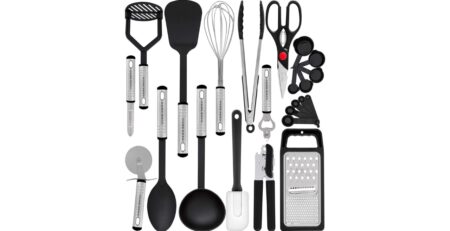Installing Floating Kitchen Shelves: A Step-by-Step Guide
Welcome to our step-by-step guide on installing floating kitchen shelves! Whether you’re looking to add extra storage, create a stylish display area, or simply enhance the functionality of your kitchen, installing floating shelves can be a game-changer. In this blog, we’ll walk you through the process of installing these versatile and trendy shelves, covering everything from choosing the right materials to mounting them securely. Get ready to transform your kitchen space with our easy-to-follow instructions and tips!

Choosing the Right Shelves
When installing floating kitchen shelves, it’s important to carefully consider the material of the shelves to ensure they can withstand the conditions of a kitchen, such as moisture and heat. Additionally, evaluating the weight capacity of the shelves is crucial to ensure they can support the items you intend to place on them, whether it’s cookware, small appliances, or decorative items. Look for shelves made of durable materials like hardwood or metal for long-lasting performance in a kitchen environment. Consider opting for adjustable shelves to customize the storage space according to your specific needs and the items you plan to store, allowing for flexibility and practicality in your kitchen.
Consider the Material
When choosing floating kitchen shelves, you have a range of material options to consider. Wood shelves provide a warm and natural look, but they may require more maintenance compared to metal options like stainless steel. Speaking of stainless steel, it’s a practical choice for its durability and resistance to corrosion in a kitchen setting. If you prefer a sleek modern aesthetic, tempered glass shelves are an excellent option, and they are easy to clean and maintain, adding both style and functionality to your kitchen.
Assessing Weight Capacity
Assessing the weight capacity of floating kitchen shelves is essential to ensure they can support the items you intend to place on them. Check the manufacturer specifications and customer reviews for real-world usage experiences to gain insights into their capacity. Consider factors such as the shelf material thickness, mounting hardware quality, and installation method when evaluating weight capacity. It’s important to ensure that the weight capacity aligns with your intended use, whether it’s for lightweight decor or heavy kitchen essentials. Consulting with professionals or experienced individuals can also provide valuable guidance in determining the appropriate weight capacity needed for your specific kitchen shelving requirements.
Choosing the Right Materials for Floating Kitchen Shelves
When determining the materials for floating kitchen shelves, it’s important to prioritize durability and strength to support the weight of kitchen items. Opt for moisture-resistant and easy-to-clean options like sealed wood or stainless steel to withstand the humid kitchen environment. Additionally, consider the aesthetic appeal of the materials and choose ones that complement your kitchen decor and style, such as natural wood for a rustic look or sleek glass for a modern touch. Lastly, evaluate the cost of materials to ensure they fit within your budget while meeting quality and durability requirements for long-lasting floating shelves in your kitchen.
Measuring and Marking for Proper Installation
To begin installing floating kitchen shelves, start by measuring the space where you plan to place the shelves. Use a level to mark straight and even lines on the wall for the shelf brackets, ensuring precision in the installation process. Double-check all measurements and markings before proceeding with the installation to avoid any errors. It’s important to ensure that the marked positions align with your desired shelf placement and are at a suitable height for easy access, allowing for convenient use of the shelves in your kitchen.









